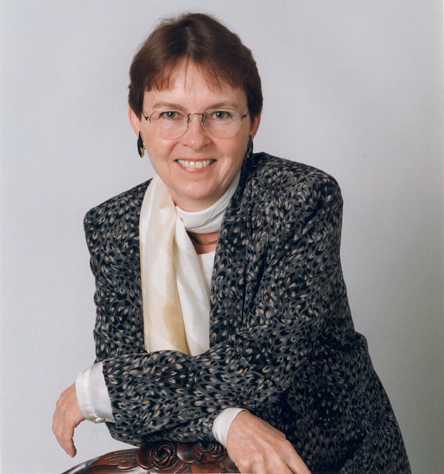
About the Piece
Instrumentation: Full Orchestra
Duration: 11:30 min
Program Note:
“For a Beautiful Land was commissioned and premiered by the Cedar Rapids Symphony Orchestra in 1996 as part of the Iowa Sesquicentennial Celebration. It began as an expression of my love of Iowa – its spirit, many beauties, and richness of this land and people both past and present. The music is tonal, rhapsodic and free-flowing, reflecting sights, sounds, memories, and impressions dear to my heart. The sounds of birds are predominant throughout, as is the wind. I tried to capture the openness, the rolling hills, and magnificent spaces of the landscape in the melodies, harmonies, and rhythms. As the music flowed from my heart, I realized that this piece was not just about Iowa. It is a song of love to our beautiful planet, nature, and life.
The symphonic poem is in three main sections. It opens with a fanfare introduced by the strings which is answered by the winds and followed by the introduction of the bird songs. This segues into the first main section, a ¾ waltz, where the melody bounces back and forth from one choir to the other. Within it is hinted my jazz background. After a quiet transition, the next section begins when the 6/8 waltz melody is introduced by a flute duet. The waltz builds and grows until there is an abrupt grand pause. Then the third section begins. This is a restatement of the first fanfare, but now in 6/8, slower, and played by the oboes. The strings interrupt this drunken-sounding revelry with a sensual waltz. All this leads to restatements and developments until the coda rises in one final whirl of activity. I invite the audience to summon up their own memories and feelings of nature, love, and life when they hear my music.” – taken from Linda Robbins Coleman’s website
Conductor’s Perspective
This is a great piece. It begins with a very Aaron Copland-esque fanfare. It is great for an American-themed concert as it depicts the many facets of the American landscape. It features woodwind instruments throughout in conversation with each other and with other sections. Also, Linda is great to work with as she is very communicative and responds to any questions very quickly.
About the Composer
Linda Robbins Coleman is an internationally acclaimed composer especially in the areas of orchestra and chamber music. She served as the Composer-in-Residence with the Cedar Rapids Symphony
Orchestra for the 1994-96 seasons, the first Iowa woman to hold this position with any orchestra. She was invited back during the 2001-02 season to help the CRSO celebrate their 80th anniversary. During the 1995-97 seasons Coleman also became Composer-in-Residence with the Wartburg Community Symphony. A native of Des Moines, she is a graduate of Drake University and has studied with the Greek National Theatre. From 1977-97 Coleman was Composer-in-Residence for Drake Theatre, scoring thirty-five plays ranging from the ancient Greeks to the moderns. An accomplished pianist, Coleman has been performing since the age of six and worked professionally as a jazz and classical soloist and accompanist. She was on the Iowa Arts Council Arts to Go performing
artist roster with singer Nancy Cooper for five years touring with their program, Music for the Grand Salon.
She has been recipient of more than 80 commissions for compositions ranging from chamber to symphonic music, and from jazz to theatre and film. To date her music has been performed and broadcast in more than thirty states in the USA, as well as Great Britain, Europe, Canada, Mexico, and the Caribbean. Her music has been performed by more than seventy organizations ranging from the Milwaukee Symphony Orchestra, the Dayton Philharmonic, the Chelsea Symphony, the Lexington Philharmonic, and the Garden State Philharmonic orchestras, to regional and local professional,
community, and university ensembles and individuals. Many orchestras have performed more than one of Coleman’s works, and new commissions have often followed as a result. In her home state of Iowa, her music has been performed by 15 orchestras and numerous chamber ensembles. Coleman is considered one of the growing number of important women composers especially in the areas of orchestral and chamber music.
For more than three decades she served as editor and research partner to Professor William S. E. Coleman, working on materials related to William F. (Buffalo Bill) Cody and the 19th century Lakotas;
the escape of the Danish Jews from Nazi persecution in 1943; and modern productions of ancient Greek plays by the Greek National Theatre. From 1988-2000 she served as research associate and copy editor for the book Voices of Wounded Knee, detailing the events and attitudes leading to the 1890 Massacre and the end of the Plains Indian Wars. It was published by the University of Nebraska Press in September 2000 and is currently available at bookstores and online.
On May 16, 2008, Linda Robbins Coleman was awarded Drake University’s distinguished Alumni Achievement Award at the Drake National Awards Dinner. This honor is bestowed annually to one
individual for outstanding achievement in a career or profession and reflects the pride of Drake University in those achievements.
Performance Materials
Instrumentation
Reduced Orchestra Version
Piccolo (doubles 2nd Flute), 2 Flutes, 2 Oboes, 2 Clarinets in B flat, 2 Bassoons
2 Horns in F
Timpani, Percussion: (2 players, minimum), Crash Cymbals (large and small), Suspended Cymbals, Snare Drum, Glockenspiel (Orchestra Bells), Tam Tam (gong), Triangle
Strings
Harp (Optional. Please only use an acoustic harp. Please omit this part if you only have a keyboard harp.)
Full Orchestra Version
Piccolo (doubles 2nd Flute), 2 Flutes, 2 Oboes, 2 Clarinets in B flat, 2 Bassoons
2 Horns in F, 2 Trumpets, 2 Trombones, Tuba
Timpani, Percussion: (2 players, minimum), Crash Cymbals (large and small), Suspended Cymbals, Snare Drum, Glockenspiel (Orchestra Bells), Tam Tam (gong), Triangle
Strings
Harp (Optional. Please only use an acoustic harp. Please omit this part if you only have a keyboard harp.)